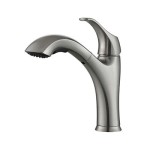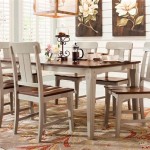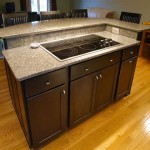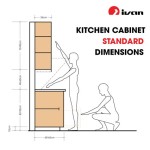Kitchen With Porcelain Tile Floor
Porcelain tiles are a popular choice for kitchen flooring due to their durability, ease of maintenance, and elegant appearance. These tiles are made from a dense, non-porous ceramic material that is fired at high temperatures, resulting in a strong and water-resistant surface. Porcelain tiles are available in a wide range of styles, colors, and sizes, making them suitable for any kitchen design.
One of the main advantages of porcelain tile flooring is its durability. These tiles are highly resistant to wear and tear, making them ideal for high-traffic areas such as kitchens. They are also resistant to scratches, stains, and chemicals, which makes them easy to clean and maintain. Porcelain tiles are also non-porous, which means they do not absorb liquids or odors, making them hygienic and resistant to mold and mildew.
Porcelain tile flooring is also relatively easy to install. The tiles can be laid over a variety of subfloors, including concrete, plywood, and existing flooring. The tiles are typically installed using a thin-set mortar and grout, and they can be cut to fit any shape or size. Grout lines can be sealed to prevent moisture penetration and staining.
Porcelain tile flooring is available in a wide range of styles, colors, and sizes, which makes it a versatile option for any kitchen design. Tiles can be found in classic colors such as white, black, and gray, as well as bolder hues such as red, blue, and green. Tiles can also be found in a variety of patterns, including geometric, floral, and mosaic. With so many options available, it is easy to find a porcelain tile floor that complements any kitchen décor.
While porcelain tile flooring is a durable and easy-to-maintain option for kitchens, it is important to note that it is not without its drawbacks. One potential drawback is that porcelain tiles can be cold and hard underfoot, especially in the winter months. To mitigate this issue, radiant floor heating can be installed underneath the tiles to provide warmth and comfort.
Another potential drawback of porcelain tile flooring is that it can be slippery when wet. This can be a hazard in kitchens, where spills are common. To reduce the risk of slipping, it is important to choose tiles with a matte or textured finish. Additionally, it is important to keep the floor clean and dry, and to use non-slip rugs in areas where spills are likely to occur.
Overall, porcelain tile flooring is a durable, easy-to-maintain, and elegant option for kitchens. These tiles are available in a wide range of styles, colors, and sizes, making them suitable for any kitchen design. While there are some potential drawbacks to consider, these can be mitigated with proper installation and maintenance.

5 Reasons To Choose Porcelain Tile Atlas Concorde Usa

Which Is Better For Kitchen Flooring Porcelain Tile Or Ceramic Lx Hausys

Top 10 Kitchen Floor Tiles Trends 2024 Stone Tile

Best Tile For Kitchen Floor How To Make The Right Choice Welcome Rubi Tools Blog

Kitchen Floor Tiles Stone Porcelain Flooring Quorn

Kitchen Floor Tile Flooring Ideas Materials Westsidetile

Is Porcelain Or Ceramic Tile Better For Kitchen Floor

Kitchen Floor Tiles Tile Giant

Ceramic Tile Kitchen Floor Pros Cons And Best Designs Stone

The Pros Cons Of Ceramic Flooring For Your Kitchen








